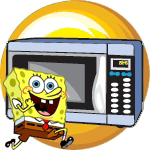Sharp launched a new line of heavy-duty compact microwave ovens designed to accommodate the limited space designs of busy commercial kitchens. The new line, which includes the 1200-watt R-CD1200M, 1800-watt R-CD1800M, and 2200-watt R-CD2200M, is redesigned to have a small footprint and a 0.7-cubic-foot cooking cavity. New TwinTouch dual controls make the microwaves ideal for crowded kitchens, allowing users to easily operate the oven no matter where it is located.
The new models feature dual control panels, one along the top of the unit and another on the bottom edge along the door. In many kitchens, the microwave is placed on a high shelf, which makes accessing the standard control panel challenging. In those situations, users can opt to use the more readily accessible bottom-mounted controls, which eliminates reaching up to the top of the microwave.
Models R-CD1200M, R-CD1800M, and R-CD2200M will be available in early 2008.
 According to the kitchen technology and appliances director of the Good Housekeeping Research Institute Karen Franke:
According to the kitchen technology and appliances director of the Good Housekeeping Research Institute Karen Franke: “We don’t recommend that people do it,” she told
“We don’t recommend that people do it,” she told  Microwave ovens are famous for cooking or heating the food but the appliance that cooks food by means of high-frequency electromagnetic radiation can also help in keeping bacteria away from taking over kitchen, a team of environmental engineers from the
Microwave ovens are famous for cooking or heating the food but the appliance that cooks food by means of high-frequency electromagnetic radiation can also help in keeping bacteria away from taking over kitchen, a team of environmental engineers from the